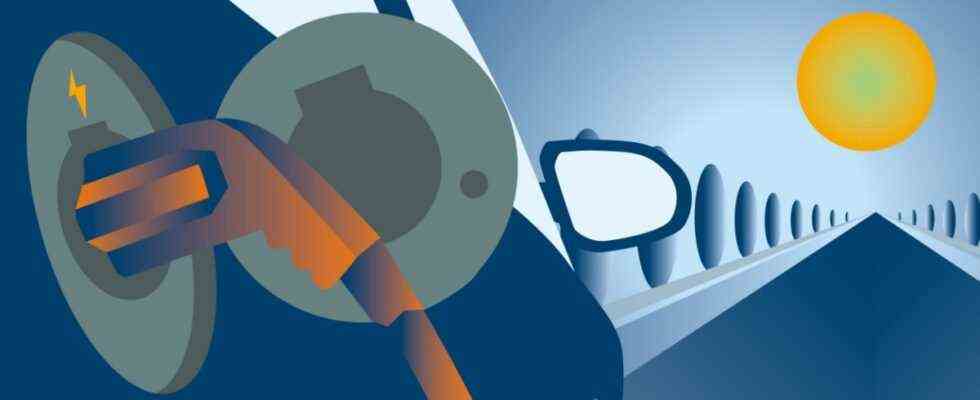How is the expansion of the charging infrastructure progressing?
According to the Federal Network Agency, there are more than 45,000 public charging points in Germany (as of July 2021). On average, there are 17 electric cars on one charging station – the EU recommends a value of ten. However, the strong regional differences are more serious. Anyone who drove an electric car or a plug-in hybrid two or three years ago could choose the charging stations in their city. Since the number of Stromers sold has skyrocketed due to the increased premiums from the federal government and manufacturers, the situation in large cities in particular has become more tense because very few have the opportunity to charge their car at home.
Which cities have the most charging stations?
The number of pillars is increasing steadily. In the big cities is currently Berlin with around 1800 charging points in front. However, calculated for every 100,000 inhabitants, Munich has 89 options for charging an electric car (around 1,300 in total). The Association of the Automotive Industry (VDA) last held an in April Cities ranking released. Salzgitter, the district of Freyung-Grafenau (Bavaria) and the city of Emden do best. There, three to four e-cars have to share a charging point. The worst is in Schwerin, Remscheid and Weimar. There are over 70 vehicles on a charging point.
The battle over public charging stations could be defused by having as many e-car drivers as possible charge their vehicles at home. This is no problem for anyone who owns their own house. It is also complicated with rented apartments or houses in which several parties live. If ten electric cars are charged here instead of two, the house connection is reaching its limits and needs to be strengthened. This can result in costs of 10,000 to 15,000 euros that the residents or the owner of the house have to pay. The implementation is technically simple, but only possible if all house residents unanimously agree. “We have many deficits in terms of charging infrastructure and there is clearly a need for action,” says Volker Blandow from TÜV Süd.
The scramble for charging parking spaces is starting in cities – is there a solution in sight?
In addition to charging stations on the roadside, more and more supermarkets, furniture stores and hardware stores are offering their own charging stations, for example Aldi, Lidl, Kaufland or Ikea. Often you can even charge there for free and with fast direct current. The Cologne start-up “On Charge” also wants to remedy the lack of charging places: Anyone who wants to have a charging station on their own doorstep can a proposal place. The company checks whether construction can take place there, whether the property is open to the public and whether it is worth installing. There are no construction fees; the company recovers the investment costs by selling electricity – at least that’s the plan.
It would be easier if filling stations not only sold gasoline, but also electricity. Aral and Shell offer this service primarily at rest stops and near the motorway. Aral wants to enable fast charging at 120 filling stations by the end of the year. With around 14,000 petrol stations in Germany, that’s a drop in the ocean. Shell acquired Ubitricity earlier this year. The Berlin start-up is converting street lights into charging stations. In Great Britain, Ubitricity already operates the largest public charging network for electric cars with 2700 charging points in street lamps or street bollards. Together with the oil multinational, this idea should now quickly establish itself.
What about super fast chargers for long haul?
The expansion of a high-performance network for super-fast charging is only making difficult progress on motorways. Of the 430 “Tank & Rast” locations, 367 are supplied with charging points. But only about half have at least 150 kilowatts (kW) of power. The federal government is currently putting the construction of 1000 more fast charging stations out to tender.
The disadvantage of direct current charging is the steep prices. The major supplier EnBW, for example, charges 0.45 euros per kilowatt hour for slow AC charging in its standard tariff. Fast DC charging costs 0.55 euros per kilowatt hour. So if you fully charge a 64 kWh battery on the roadside, you pay 35.0 euros. This can travel between 300 and 500 kilometers, depending on the car, driving style and weather. Fossil fuel is no more expensive either.
Tesla is the global market leader with more than 25,000 high-performance fast charging stations. So far, the reliable charging stations have only been available to our own customers. However, Tesla boss Elon Musk announced in July that it would release the “Supercharger” for all electric cars. In Germany alone, this would add around 1,100 additional fast charging points. But Musk did not give an exact schedule. In Internet forums, Tesla drivers are not very enthusiastic about this idea because of the greater demand.

